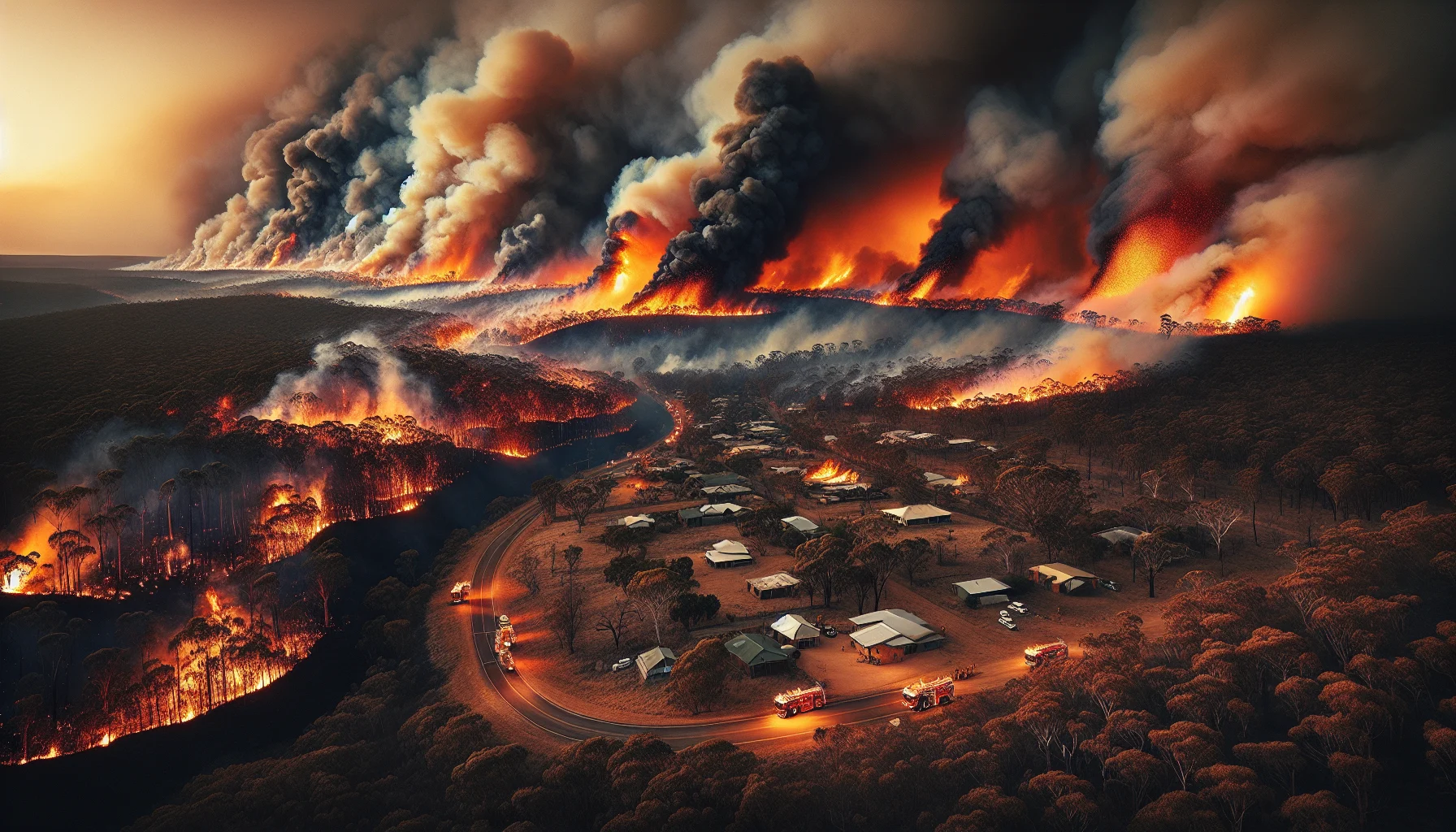
Ash Wednesday Bushfires
by: The Calamity Calendar Team
February 16, 1983
Early Whispers of Danger
February 1983 began with a foreboding sense in the air for residents of southeast Australia. For months, these regions had languished under the oppressive weight of drought. The land was thirsty, the vegetation brittle, and every dry blade of grass hinted at the potential for catastrophe. The preceding summer months had offered little reprieve, marked instead by sweltering temperatures and relentless winds that whipped across the parched farmlands. In the backdrop loomed El Niño, a weather phenomenon notorious for its relationship with dry spells in Australia. These conditions concocted a perfect storm, creating a powder keg in the landscape wherein the smallest spark could ignite an inferno.
The Ignition
In the early hours of February 16, 1983, the day began like any other in Victoria and South Australia, albeit tinged with apprehension. It was a Wednesday—unremarkable by calendar standards but destined to be seared into the memories of those who were there. By late morning, a symphony of sirens and radio alerts had broken out across these states as the first indications of multiple fires were reported. Small towns such as Macedon were among the first to find themselves in peril. By midday, howling winds reaching up to 110 kilometers per hour drove the flames in unpredictable directions, challenging even seasoned emergency services.
A Day of Horror
As the sun climbed in the sky, so did the fears of residents and officials alike. In what seemed like the blink of an eye, small, manageable blazes evolved into monstrous firefronts that consumed everything in their path. Macedon looked on helplessly as houses were licked by flames and reduced to smoldering ruins. Residents across more populated areas like Cockatoo and Upper Beaconsfield in Victoria, and the Adelaide Hills in South Australia, found themselves scrambling for safety, many with little more than moments' notice.
The prediction of fire movements became an impossible puzzle, with wind directions shifting frequently. As afternoon melded into evening, the scenes were ones of pandemonium—residents evacuating, clutching at their precious belongings, livestock scattering, and firefighters engulfed in a herculean battle against nature. Spot fires sprung up dozens of kilometers ahead of the main blazes, adding to emergency crews' daunting challenge.
Night of a Thousand Fires
By nightfall, many found themselves engulfed in chaos. Authorities, exhausted but unyielding, worked through the night, trying desperately to keep the fleeing inferno from multiplying the toll. Communities huddled, anxiously listening to radio broadcasts and praying for rain. Against the backdrop of pitch-black skies, fires raged, unabated and indiscriminate. The oppressive heat from the blazes mingling with the darkness was a surreal and terrifying spectacle.
In the Ashes’ Wake
When dawn broke the following day, the true scope of the calamity began to emerge. The fires had exacted a heavy price: 75 lives had been lost, including those of dedicated firefighters who met heroically with fate. The human toll was matched by the staggering loss of property, with over 2,080 homes and 1,300 farm buildings lying in ruin. Entire rural livelihoods were upturned as more than 340,000 livestock perished, devastating agricultural communities.
Thanks for subscribing!
Estimates of economic damages were pegged at around AUD 400 million at the time, a figure that balloons to over one billion US dollars when considered in today’s terms. Nevertheless, numbers alone fail to account for the days, months, and in some cases, years of recovery needed for individuals to reclaim normalcy.
Rising from the Ashes
In the face of such adversity, the spirit of recovery took hold swiftly. Australia, a nation familiar with the untamed nature of its land, responded with solidarity. Aid flowed from across the country and abroad, with efforts focused on rehabilitating affected areas. Support for farmers came in the form of financial aid, seed, and livestock donation, easing the burden of reconstruction.
Alongside the physical rebuilding came an essential reflection on policies and practices that had governed fire management. The Ash Wednesday bushfires elicited a paradigm shift in how the threat of bushfires was communicated and handled. Recommendations from subsequent inquiries emphasized the need for smarter, proactive communication systems capable of dispatching real-time warnings to at-risk communities, and better integration of weather data in predictive models.
The Lessons Endure
In the decades that followed, the lessons born from Ash Wednesday have continually informed Australia's approach to fire management. They have spurred advancements in firefighting technology, improved training programs, and ushered in policies that stress the importance of prevention and preparedness in equal measure to response.
As climate change casts its long shadow over the future, increasing the frequency and intensity of extreme weather events globally, the Ash Wednesday bushfires remain a somber reminder of the power and capricities of nature. They underscore the imperative of vigilance and the need for communities to adapt with resilience and ingenuity, learning from past tragedies to shape a safer tomorrow.
Stay in the Loop!
Become a Calamity Insider and get exclusive Calamity Calendar updates delivered straight to your inbox.
Thanks! You're now subscribed.